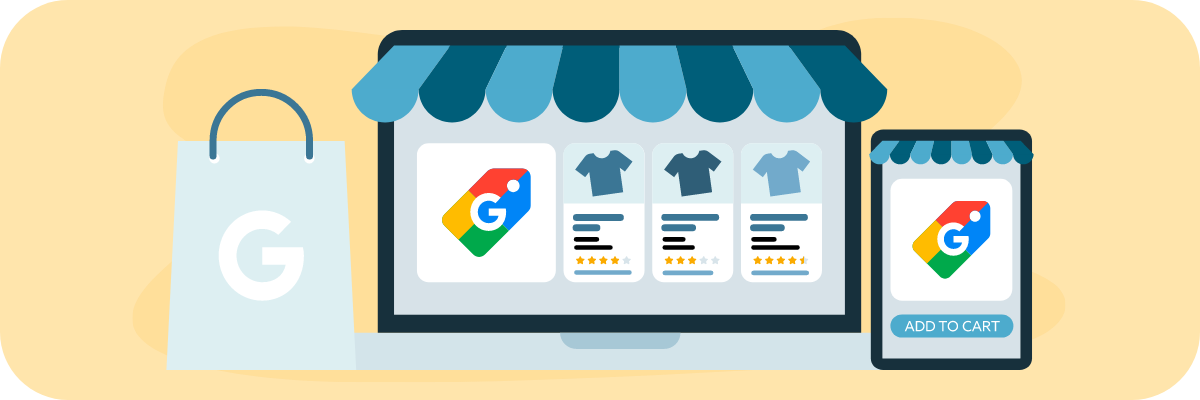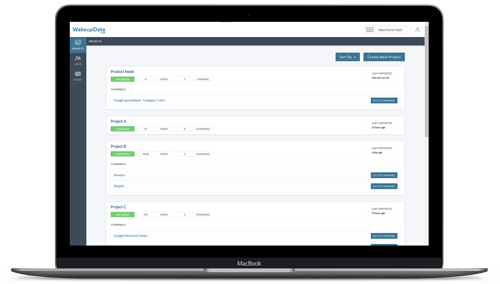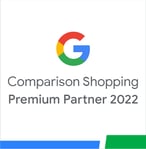The future of Smart Shopping campaigns: Performance Max
Posted on May 16, 2022 (Last Updated: May 23, 2022)
Are you running or planning to run Google smart shopping campaigns? Then this blog post is for you.

What is Performance Max?
In 2022 Google will introduce Performance Max (PMax) as a new campaign type in Google Ads, replacing its predecessor, Smart shopping campaigns. As Smart shopping campaigns are eventually going to be ruled out, Google’s suggestion is to start learning about the new tool as soon as possible to make the transition easier for yourself.
The main vision behind PMax is to bring an increased level of automation and additional channels to advertise on for marketers.
What is the purpose of Performance Max?
Performance Max is a campaign type that runs across multiple channels (Search, Display, Discover, Youtube, Gmail, and Maps), and is entirely automated.
Google’s drive to introduce this new option was the perception that many advertisers got lost in all the different types of campaigns, it was difficult to choose the right channel for each campaign and become an expert in that area. This eventually led to marketers choosing just a few channels to take a deep dive into, and in the end they missed out on the full potential Google Ads had to offer.
This high level of automation might sound intimidating at first, Google’s approach however is not to take full control over processes and take all the freedom and responsibility away from users. You still need to set up the right goals and provide valuable assets to make use of PMax.
To specify these goals that are of an extreme relevance Google introduced a new framework. You can optimize towards one or more goals (online sales, lead generation and/or offline sales) and assign different values to your conversions to drive the highest return on investment. Within a certain goal, you are able to set primary and secondary actions. Primary actions are essentially the ones that contribute to (automatic) bid optimization, secondary goals are being monitored so that you can observe them, but they are not being actively optimized towards by the system.
It is important to note that as it stands now channels can’t be manually excluded from PMax as the aim here is not to miss out on any opportunities. Performance Max is primarily a performance-driven campaign that relies on conversion goals. For reaching KPI’s outside of performance, the suggested best practice is to continue using other types of campaigns along with PMax. For upper funnel goals such as creating awareness, having a specific campaign run on Youtube could be a good solution complemented by Performance Max for lower funnel purposes.
How does Performance Max differ from Smart shopping campaigns?
PMax utilizes all Google inventory as previously mentioned, and it also brings different bidding options to the table.
While Smart shopping campaigns only ran on Search, 3P Display and O&O Display including Gmail and Youtube only, Performance Max brings Discover, Youtube In-stream and Maps to the table as well to improve reach and conversions and to unlock new audience segments.
Bidding options of New customer acquisition, Store visits bidding, Conversation value maximizing with optional return on ad spend is supplemented with Conversion value maximizing with optional cost per action in Performance Max. In contrast to Smart shopping, Performance Max builds on defining goals with targets, and bidding is fully automated.
Additionally, in terms of control and transparency you are able to set Conversion value rules and deliver Audience signals for better performance, and you are presented with an Insights page for an overview.
Budgets were often separated and siloed by network or goal in Smart Shopping Campaigns, in PMax they are pooled across inventory and encouraged to be shared across goals for better overall performance.
What ad formats are offered, and what do you need to provide?
In this highly technical section, the different ad types that are offered will be described on each Google Inventory along with what assets you need to provide for them to work.
Search Network
In the Search inventory, Shopping ads and Text ads are the offered formats. For Shopping ads a feed is needed, and for Text ads the text itself, supplemented with a final URL.
Display 3P
The ad types in question here are Responsive and Dynamic display ads. For Responsive display ads what you need to provide is an image, text and video assets. Dynamic display ads use feed, image, text, html5 and video assets.
Display O&O (Gmail and Youtube)
To appear on Gmail and Youtube, similarly to Display 3P Responsive and Dynamic display ads are the options. Responsive display ads utilize image and text assets, while Dynamic display ads need a feed as well.
Display O&O (Discover)
Same way as the aforementioned display inventories, Responsive and Dynamic display ads are provided. For both Responsive and Dynamic display ads image and text assets are crucial.
Youtube (video only, excluding display)
The ad format offered is Youtube instream, which operates on text, image and video assets provided by you.
Maps
For Google Maps, Local Inventory Ads (LIA) on placesheet and Map pins are in question. What you need to provide is image, text assets and a GMB feed.
Best practice is to organize assets in asset groups. An asset group is a set of creatives that will be used to create an ad, depending on which channel (inventory) it serves. They are advised to be organized as you would organize ad groups by common themes (products) for instance. More assets allow more potential ad formats and more users to be reached.
Best practices and how to make the most out of Performance Max
It is strongly recommended to start testing Performance Max as early on as possible as it can take time to supply all the assets needed. It can be used along with existing regular shopping campaigns as a complementary strategy, as regular campaigns often have additional features such as search with keywords, which can help maintain brand presence and conversion volume meanwhile PMax can help to catch any additional conversion opportunities out there.
It is also advised to evaluate Performance Max results after 4-6 weeks. If the goal you set is to maximize conversions, you can look at conversions and cost per action for evaluation. If your chosen goal is to maximize conversion value, you can turn to conversion value and return on ad spend at account level pre and post acquisition of PMax campaign for insights .
For best performance, you need to provide as much information during the campaign set-up as possible. This can include Remarketing list, Custom intent, Customer match and Customer match similar audiences as signals to the campaign.
Creatives (assets) are of a great importance when it comes to campaigns as unique and visual content are your most valuable tools to maximize performance. If you have many products to add to your campaign the process of optimising all the data manually can be an extremely time-consuming and long process. To get the best results it is a great idea to partner up with a data feed management platform such as WakeupData. This way, you can ensure all the data uploaded is ideal and up-to-date which is crucial for Pmax campaigns to perform well.
It is advised for time-based promotion campaigns (for example for a weekend sale) to start the campaign 2 to 3 weeks prior for best results.
Last but not least, it is essential to spend time on going through reports, inspect ad strength and of course strive for excellence in ad rank. Don’t forget about maintaining hygiene, double-check for correct values and information, and most importantly correct goals
If you have any questions or you are interested in how product feed management could help your business feel free to reach out to us.



